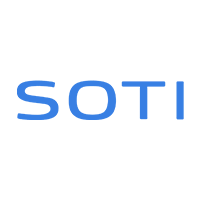
According to Fortinet’s Semiannual 2023 Global Threat Landscape Report, cyber attackers are exploiting vulnerabilities in businesses 43% faster than the previous period, taking less than 5 days to exploit a vulnerability.
Organizations need device compliance and monitoring solutions to minimize potential risks. However, if issues do arise, these solutions also help address any vulnerabilities. Mobile Device Management (MDM) software allows IT administrators to manage, monitor and secure mobile devices. It ensures that all devices adhere to organizational and regulatory standards.
What Is Device Compliance in MDM?
Part of an MDM solution involves ensuring that all mobile devices adhere to specific and standardized security policies set by an organization to comply with regulatory requirements.
As organizations hold crucial and confidential customer information, it’s vital that information remains secure. Furthermore, there may be legal repercussions if an organization fails to protect customer data, as increased data protection regulations have been passed across many countries.
The policies that an organization can implement include rules around password complexity, encryption, app management, operating system updates and more. Through compliance measures, devices remain secure and protect sensitive corporate data, reducing the risk of breaches.
On the other hand, remote device monitoring tracks device behavior, configurations, app usage and device status. These insights help ensure that devices remain compliant throughout their entire lifecycle, from deployment to end of life.
Continuous oversight is critical for identifying and mitigating security threats before they escalate into full-blown breaches or data violations.
Why Organizations Leverage MDM to Ensure Compliance
1. Enhance Security & Reduce Risks
One of the primary reasons for leveraging MDM is to bolster security. Through the automation of security policies, such as strong password protection rules and encryption, the risk of data breaches, malware infections and unauthorized access is reduced.
For instance, if a device is lost or stolen, MDM solutions can remotely lock or wipe the device to prevent unauthorized access to sensitive data. This immediate and automatic response is critical to minimize potential security incidents and to safeguard corporate information.
2. Meet Regulatory Requirements
Compliance is not just about internal policies, it also involves adhering to external regulatory standards, such as the General Data Protection Regulation (GDPR), particularly in highly regulated industries like healthcare, finance and government.
In order to achieve this, compliance must start at the product level. It is important that your MDM solution meets international standards for managing risks and securing data. Complying with these standards helps to protect customer data and organizational reputation, avoid fines, and minimize legal consequences.
By leveraging a strong MDM solution, organizations can enforce compliance across all devices, automatically applying necessary security configurations and monitoring device activity for potential breaches. Organizations can also generate compliance reports to demonstrate adherence to regulations.
3. Streamline Device Management & Reduce Workloads
Managing a large fleet of mobile devices can be overwhelming for IT teams, especially when it comes to ensuring compliance.
By centralizing management of mobile devices, IT workload is significantly reduced, as repetitive tasks such as pushing software updates, security patches and compliance checks are automated.
With less workload and greater comprehensive insight and visibility, IT teams can quickly identify any non-compliant devices, apply necessary updates and resolve issues without manually handling each device. This efficiency not only reduces IT workload but also minimizes the risk of human error, which can often lead to security vulnerabilities.
4. Support BYOD & Remote Work Policies
In 2023, 70% of IT professionals confirmed they had seen an increase in one or more types of devices used within their organization (including personal devices). With the rise of Bring Your Own Device (BYOD) policies and remote work arrangements, new challenges for maintaining compliance and security have been introduced. There are increased cyberthreats, risks of device loss, and inefficient device and app usage.
MDM solutions support these remote work policies by allowing organizations to monitor and manage both corporate-owned and personal devices without infringing on employees' privacy, ensuring that only work-related information is subject to monitoring and compliance checks. This flexibility is essential for maintaining security while fostering a productive and flexible work environment.
5. Enhance Employee Productivity
Employee productivity is directly impacted by whether devices are secure, up-to-date and functioning correctly. Through remote device monitoring and troubleshooting, IT teams can quickly resolve device-related problems and minimize downtime.
By maintaining a stable and secure mobile environment, organizations can ensure that employees remain productive and focused on their core tasks.
Click to expand and download
Key Strategies for Effective Device Compliance & Monitoring
Organizations should implement the following compliance and monitoring strategies to minimize risks:
1. Develop Clear & Comprehensive Compliance Policies
Organizations should establish clear compliance policies that define security standards, acceptable-use guidelines, and procedures for handling non-compliance. These policies should be regularly reviewed and updated to reflect evolving regulatory requirements and security threats.
2. Automate Compliance Checks & Monitoring
Automation is critical to protect corporate data. MDM solutions should automate compliance checks and software updates, reducing the burden on IT teams and ensuring that devices remain secure at all times
3. Leverage Advanced Security Features
MDM solutions offer a range of advanced security features, such as geofencing, remote wipe capabilities and encryption. Organizations should leverage these features to create a robust, secure and compliant mobile device environment.
4. Conduct Regular Security Audits
Regular security audits are crucial for identifying and addressing potential vulnerabilities in the device landscape. MDM solutions can provide detailed reports on device activity, compliance status and potential threats, enabling organizations to proactively address security gaps.
Conclusion
Device compliance and remote device monitoring are integral components of a successful Mobile Device Management strategy. By enforcing security policies and continuously monitoring devices for potential threats, organizations can reduce risks, meet regulatory requirements and enhance operational efficiency.
By adopting best practices and leveraging advanced MDM tools, organizations can ensure that their mobile devices remain secure, compliant and productive.




